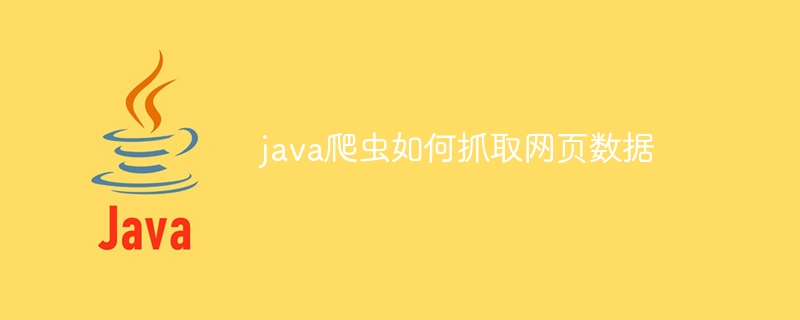Fetching steps: 1. Send HTTP request; 2. Parse HTML; 3. Process data; 4. Process page jumps; 5. Process anti-crawler mechanism. Detailed introduction: 1. Send HTTP request: Use Java's HTTP library to send GET or POST request to the target website to obtain the HTML content of the web page; 2. Parse HTML: Use the HTML parsing library to parse the web page content and extract the required information. Specific HTML elements or attributes can be located and extracted through selector syntax; 3. Process data, etc.

Operating system for this tutorial: Windows 10 system, Dell G3 computer.
Java crawlers that crawl web page data usually follow the following steps:
1. Send an HTTP request: Use Java's HTTP library (such as HttpURLConnection, Apache HttpClient or OkHttp) Send a GET or POST request to the target website to obtain the HTML content of the web page.
2. Parse HTML: Use an HTML parsing library (such as Jsoup) to parse web page content and extract the required information. Specific HTML elements or attributes can be located and extracted through selector syntax.
// 示例使用 Jsoup 解析HTML
Document document = Jsoup.parse(htmlString); // htmlString 是从HTTP响应中获取的HTML内容
Elements elements = document.select("css-selector"); // 使用选择器定位元素
3. Process data: Clean, transform and store the extracted data. You can store data in memory, write it to a file, or store it in a database, depending on your needs.
4. Process page jumps: If the web page contains links, you need to process page jumps and recursively obtain more page information. This can be achieved by parsing the link and sending a new HTTP request.
5. Dealing with anti-crawler mechanisms: Some websites adopt anti-crawler strategies and may need to process verification codes, simulate user behavior, use proxy IPs and other methods to circumvent these mechanisms.
The following is a simple example that demonstrates how to use a Java crawler to crawl web page data:
import org.jsoup.Jsoup;
import org.jsoup.nodes.Document;
import org.jsoup.select.Elements;
import java.io.IOException;
public class WebCrawler {
public static void main(String[] args) {
String url = "https://example.com"; // 目标网页的URL
try {
// 发送HTTP请求并获取HTML内容
Document document = Jsoup.connect(url).get();
// 使用选择器提取数据
Elements titleElements = document.select("title");
String pageTitle = titleElements.text();
System.out.println("Page Title: " + pageTitle);
// 进一步提取其他信息...
} catch (IOException e) {
e.printStackTrace();
}
}
}
This is just a simple example, the actual crawler program may require more processing and optimization, It depends on the structure and needs of the target website. Ensure compliance with website usage guidelines and laws and regulations during the crawling process.
The above is the detailed content of How does java crawler crawl web page data. For more information, please follow other related articles on the PHP Chinese website!